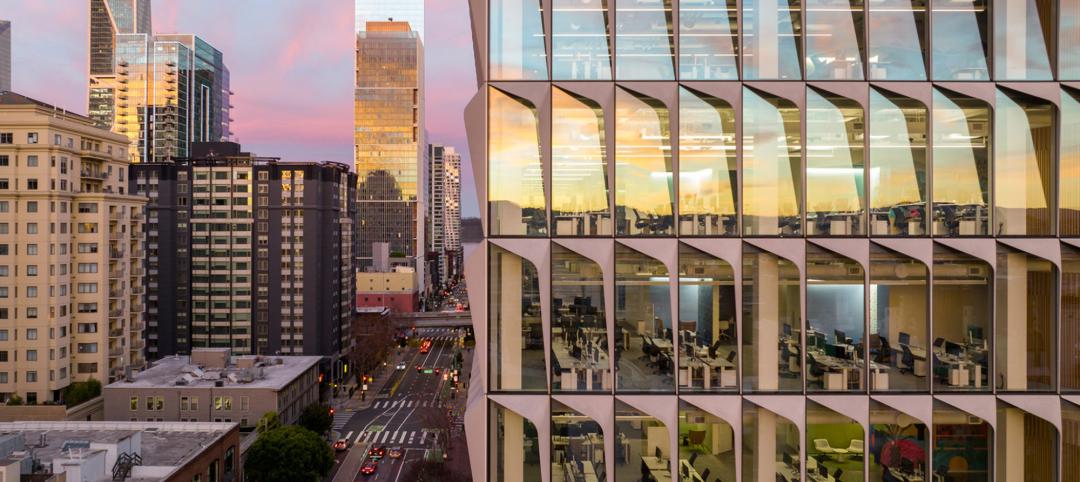Perkins and Will is the world’s second-largest architecture firm, with 26 studios across the globe. So it is acutely aware of the impact that the coronavirus is having on construction projects.
The firm’s CEO, Phil Harrison, says the current situation, with some projects being placed on hold since the onset of the pandemic, actually isn’t dramatically different yet from the volatility that global markets have experienced for the past three years.
“It is too early to accurately report if a higher percentage of our projects are slowing, stopping or being cancelled due to the pandemic,” he said in an email to BD+C. “Notably, in some cases, we are getting busier as result of the current situation, as some clients are asking us to work on temporary facilities.”
Despite his expectation that Perkins and Will would remain busy “for the near term,” Harrison acknowledges mandates that have shut down construction in Boston and Cambridge, Mass., and have severely restricted gatherings and people movement in cities like San Francisco and New Orleans and states like New York, Illinois, and Ohio.
His firm has also had to deal with supply-chain disruptions that manifested themselves first in China and more recently in Italy for such components as curtainwall.
Harrison thinks it’s premature to speculate about what the coronavirus’ longer-term impact might be on the construction industry. “Much of this will depend on the duration of the economic reaction to the pandemic.”
But he does see a potential silver lining from this travail. “We believe that design and wellbeing are inextricably connected, and that, in the future, our clients will value this connection all the more,” says Harrison.
He notes that Perkins and Will is already working this way. For example, infection control has long been a priority of its healthcare clients, and the firm has been incorporating advanced design features to reduce infection control in its projects. “No doubt, we will implement these advanced strategies on more of our healthcare projects, and it is certainly possible that other building typologies will benefit from some of these design features,” he says.
Similarly, Perkins and Will has been applying resilient design principles in all of its work. “It is easy to predict that our client will value this approach even more,” he says.
Related Stories
Office Buildings | Jun 28, 2023
When office-to-residential conversion works
The cost and design challenges involved with office-to-residential conversions can be daunting; designers need to devise creative uses to fully utilize the space.
Arenas | May 18, 2023
How can we reimagine live sports experiences?
A Gensler survey finds what sports fans' experiences have been like returning to arenas, and their expectations going forward.
Headquarters | May 15, 2023
The new definition of Class A property
Dan Cheetham, Managing Director and Founder of FYOOG, believes organizations returning to a "hub and spoke" model could have a profound effect on properties once considered Class B.
Office Buildings | May 5, 2023
9 workplace design trends for 2023
HOK Director of WorkPlace Kay Sargent and Director of Interiors Tom Polucci discuss the trends shaping office design in 2023.
Multifamily Housing | Apr 4, 2023
Acing your multifamily housing amenities for the modern renter
Eighty-seven percent of residents consider amenities when signing or renewing a lease. Here are three essential amenity areas to focus on, according to market research and trends.
Urban Planning | Mar 16, 2023
Three interconnected solutions for 'saving' urban centers
Gensler Co-CEO Andy Cohen explores how the global pandemic affected city life, and gives three solutions for revitalizing these urban centers.
Laboratories | Mar 9, 2023
5 laboratory design choices that accelerate scientific discovery
Stephen Blair, director of CannonDesign's Science & Technology Practice, identifies five important design strategies to make the most out of our research laboratories.
Augmented Reality | Jan 27, 2023
Enhancing our M.O.O.D. through augmented reality therapy rooms
Perkins Eastman’s M.O.O.D. Space aims to make mental healthcare more accessible—and mental health more achievable.
K-12 Schools | Nov 30, 2022
School districts are prioritizing federal funds for air filtration, HVAC upgrades
U.S. school districts are widely planning to use funds from last year’s American Rescue Plan (ARP) to upgrade or improve air filtration and heating/cooling systems, according to a report from the Center for Green Schools at the U.S. Green Building Council. The report, “School Facilities Funding in the Pandemic,” says air filtration and HVAC upgrades are the top facility improvement choice for the 5,004 school districts included in the analysis.
Giants 400 | Nov 14, 2022
4 emerging trends from BD+C's 2022 Giants 400 Report
Regenerative design, cognitive health, and jobsite robotics highlight the top trends from the 519 design and construction firms that participated in BD+C's 2022 Giants 400 Report.

















